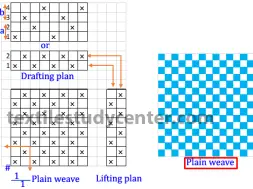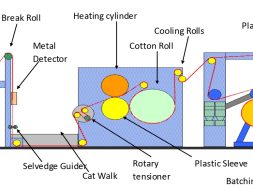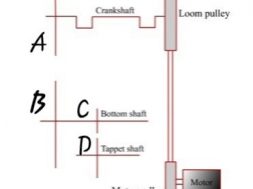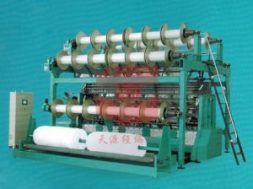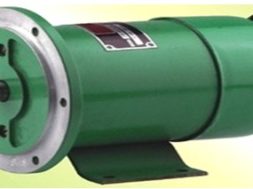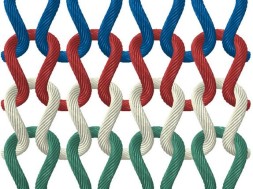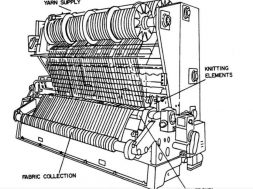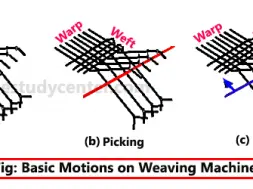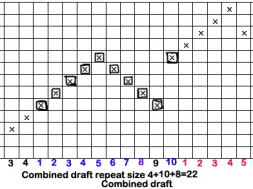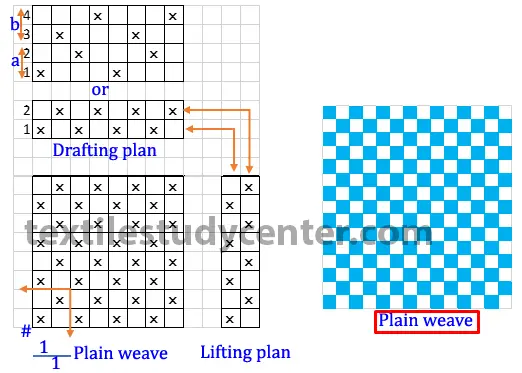
Plain Weave Definition and Plain Weave Classification

Md Sohanur Rahman Sobuj



Latest posts by Md Sohanur Rahman Sobuj (see all)
- Thermal Properties of Polymers - April 26, 2019
- Frictional Properties - September 15, 2018
- Torsional Properties of Textile Materials - August 30, 2018
Plain Weave Definition and Plain Weave Classification :
Plain Weave Definition :
Plain weave :
A weave in which there are 2 ends and 2 picks in a repeat is called a plain weave. It is the simplest of all weaves and variously known as “calico” or “tabby” weave.
Features of plain weave
It has the maximum number of binding points.
It has the smallest repeat 2 x 2.
Both sides of the weave are identical.
The threads interlace on alternate order of 1 up and 1 down.
Each thread gives maximum amount of support to the adjacent threads.
Texture is stronger and firmer than any other ordinary cloth.
Made from all kind of textile raw materials and yarns.
Minimum 2 heald frames are required to form the weave.

End uses
Plain weave finds extensive uses. It is used in cambric, muslin, blanket, canvas, dhothi, saree, shirting, suiting, etc.
Classification of plain weave
According to warp and weft cover factors
❶ Approximately square cloth
E.P.I=P.P.I
Warp count=Weft count
Warp cover factor=Weft cover factor
Warp crimp(%)=Weft crimp(%)
The warp and weft are equally prominent.
❷ Warp faced cloth
E.P.I>P.P.I
Warp count>Weft count
Warp cover factor>Weft cover factor
Warp crimp (%)>Weft crimp (%)
The warp prominent on both side.
![]()
❸ Weft faced cloth
E.P.I<p.p.i< span=””></p.p.i<>
Warp count
Warp cover factor
Warp crimp (%)
The weft prominent on both side.
![]()
Another method of classification
❶ Balanced cloth
E.P.I=P.P.I
Warp count=Weft count
Warp crimp (%)=Weft crimp (%)
The warp and weft are equally prominent.
![]()
❷ Unbalanced cloth
E.P.I=P.P.I, but warp count≠weft count
![]()
E.P.I≠P.P.I, but Warp count=Weft count
![]()
E.P.I≠P.P.I, but Warp count≠Weft count
![]()
(6223)

Md Sohanur Rahman Sobuj



Latest posts by Md Sohanur Rahman Sobuj (see all)
- Thermal Properties of Polymers - April 26, 2019
- Frictional Properties - September 15, 2018
- Torsional Properties of Textile Materials - August 30, 2018
